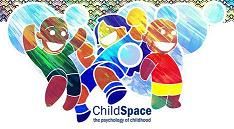 When my sister was four years old, I had a chat with her after preschool that I will never forget. I had asked her how her day went and how her friends were doing. She answered, “Janis* isn’t my friend anymore.” When I asked her why, she said to me, with her little, sad four-year-old eyes, “Because I’m black.” Wait, what? Janis explicitly told my little sister that she was not going to play with her anymore because she was a different race. Then and there, I explained the topic of racism to my sister.
When my sister was four years old, I had a chat with her after preschool that I will never forget. I had asked her how her day went and how her friends were doing. She answered, “Janis* isn’t my friend anymore.” When I asked her why, she said to me, with her little, sad four-year-old eyes, “Because I’m black.” Wait, what? Janis explicitly told my little sister that she was not going to play with her anymore because she was a different race. Then and there, I explained the topic of racism to my sister.
It’s largely believed that children aren’t born racist and it’s learned at home. As defined by the Oxford English Dictionary, ‘Racism’ is ‘the belief that all members of each race possess characteristics, abilities, or qualities specific to that race, especially so as to distinguish it as inferior or superior to another race or races.’ Perhaps babies aren’t racist, but they can definitely discriminate between races. As young as 6 months old, babies demonstrate awareness of the difference between racially distinctive faces. Even children with autism show similar recognition. So then, how does this ability to discriminate, develop into racism? That’s where society at large comes into play. Children absorb information from the world around them, and they learn quickly.
Jane Elliott was a third grade teacher in Iowa during the time of Martin Luther King Jr.’s movement and assassination. Immediately after his death, she broached the subject of discrimination with her class of Caucasian third graders. On the first day, she told them that brown eyed children are bad and aren’t smart. Among other things, those children were made to wear a distinguishing scarf, were instructed to not play with the others and not use the water fountain. The following day, she told them she made a mistake and blue eyed children are bad. The same consequences the brown eyed children experienced the day before were assigned to the blue eyed children. The documentary of her experiment clearly shows the effect on their mood, as well as the effect on their academic performance.
Fast forward several decades to 2005 when Kiri Davis created an anthology for her high school literature class, in which she interviewed African-American teen girls on their opinions about black skin and beauty. She also replicated the famous “Doll test”conducted by psychologists Kenneth and Mamie Clark in the 1940s (which contributed to the ruling that struck down racial segregation in education). The results of this test, conducted with black children, included the children’s preference for a white doll over an identical black doll to play with, as well as the perception that the white doll is nice and the black doll is bad.
In addition to the findings depicted in these videos, it’s been established that racism and discrimination are psychosocial stressors for non-white children. They are more susceptible to depression and harm to their self-esteem. Also, they may fall victim to self-fulfilling prophecy. If you’re told you’re ‘stupid’ or ‘bad’ long enough, you start to believe it and play the part.
Most important in curbing racism is open and explicit, age-appropriate discussion at home and at school.
To be effective, researchers have found, conversations about race have to be explicit, in unmistakable terms that children understand. A friend of mine repeatedly told her 5-year-old son, “Remember, everybody’s equal.” She thought she was getting the message across. Finally, after seven months of this, her boy asked, “Mommy, what’s ‘equal’ mean?” – Po Bronson & Ashley Merryman
This is proving to be extremely difficult because adults are uncomfortable talking about race. Easing into these discussions using children’s books and videos (type in “race + children” on amazon.com), or even after some shared experience in your neighborhood, may be easier than jumping into the deep end of the racism discussion pool. Given the effect of discrimination, it’s more harmful to set our children up to living in a framework of ‘us’ versus ‘them.’
Read More: How can we help our children learn to deal with prejudice?
Pre-empting Racism
Talking to Our Children About Racism & Diversity





So weird that you brought this up today cause I was reading this blog post http://dustytakle.com/2010/08/19/am-i-a-black-person/ yesterday.
I agree it is a difficult topic to tackle. Parents want to hide and shelter their kids from the ills of society for as long as they can but this leaves the child open to the many influence networks outside of the home (tv, home, etc).
Thanks for sharing that link!